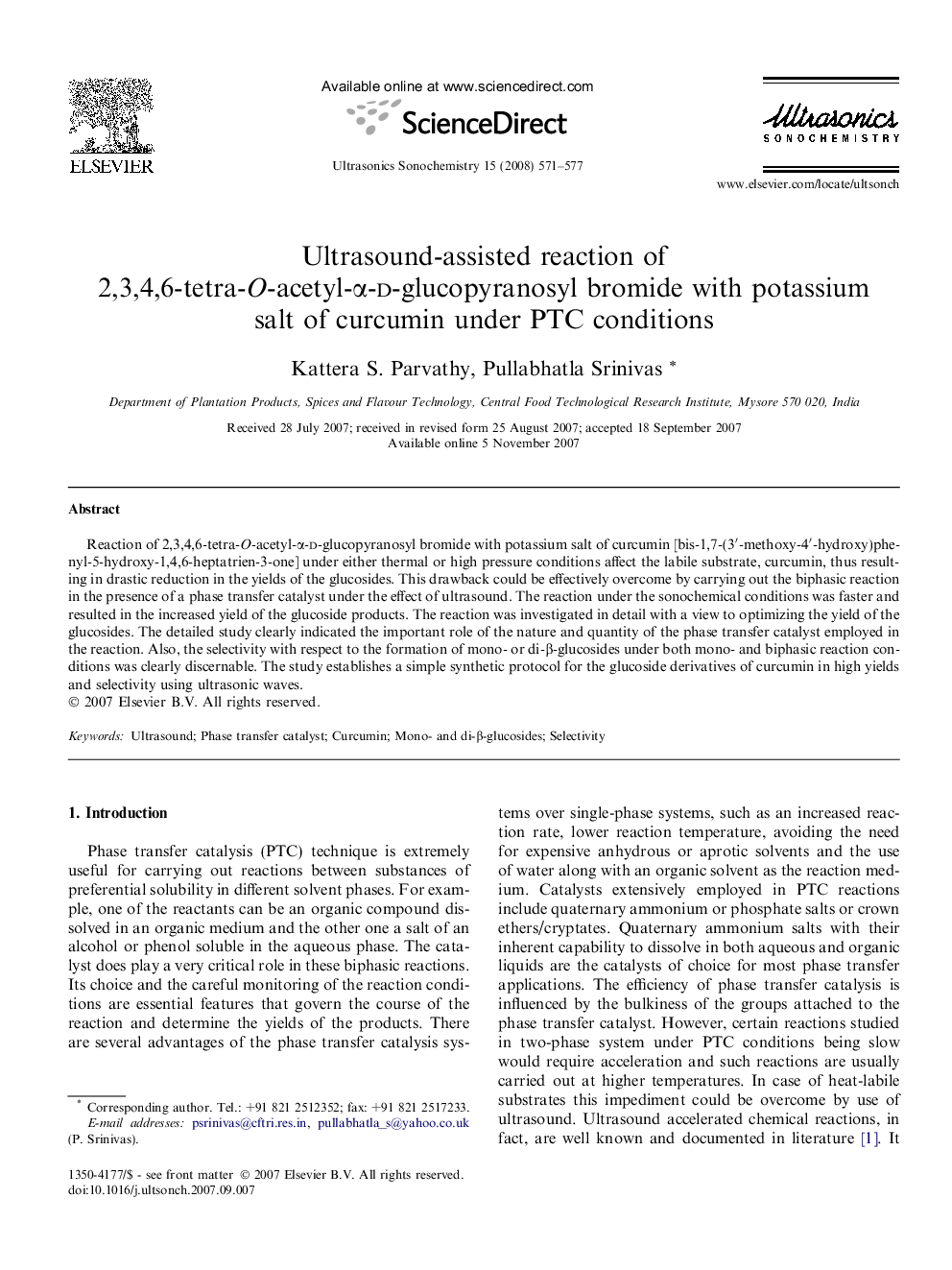| Article ID | Journal | Published Year | Pages | File Type |
|---|---|---|---|---|
| 1266634 | Ultrasonics Sonochemistry | 2008 | 7 Pages |
Reaction of 2,3,4,6-tetra-O-acetyl-α-d-glucopyranosyl bromide with potassium salt of curcumin [bis-1,7-(3′-methoxy-4′-hydroxy)phenyl-5-hydroxy-1,4,6-heptatrien-3-one] under either thermal or high pressure conditions affect the labile substrate, curcumin, thus resulting in drastic reduction in the yields of the glucosides. This drawback could be effectively overcome by carrying out the biphasic reaction in the presence of a phase transfer catalyst under the effect of ultrasound. The reaction under the sonochemical conditions was faster and resulted in the increased yield of the glucoside products. The reaction was investigated in detail with a view to optimizing the yield of the glucosides. The detailed study clearly indicated the important role of the nature and quantity of the phase transfer catalyst employed in the reaction. Also, the selectivity with respect to the formation of mono- or di-β-glucosides under both mono- and biphasic reaction conditions was clearly discernable. The study establishes a simple synthetic protocol for the glucoside derivatives of curcumin in high yields and selectivity using ultrasonic waves.
